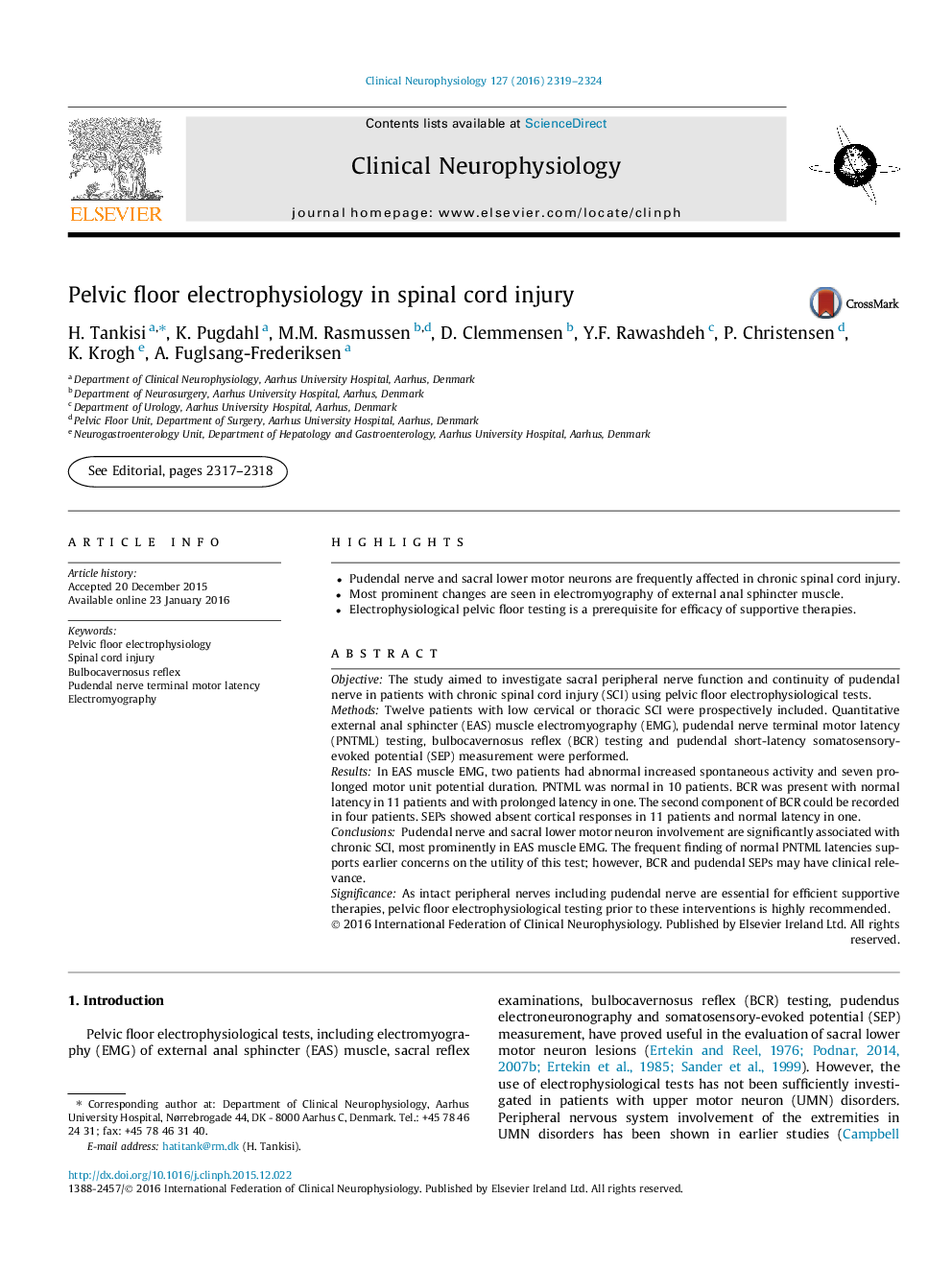| Article ID | Journal | Published Year | Pages | File Type |
|---|---|---|---|---|
| 6007455 | Clinical Neurophysiology | 2016 | 6 Pages |
â¢Pudendal nerve and sacral lower motor neurons are frequently affected in chronic spinal cord injury.â¢Most prominent changes are seen in electromyography of external anal sphincter muscle.â¢Electrophysiological pelvic floor testing is a prerequisite for efficacy of supportive therapies.
ObjectiveThe study aimed to investigate sacral peripheral nerve function and continuity of pudendal nerve in patients with chronic spinal cord injury (SCI) using pelvic floor electrophysiological tests.MethodsTwelve patients with low cervical or thoracic SCI were prospectively included. Quantitative external anal sphincter (EAS) muscle electromyography (EMG), pudendal nerve terminal motor latency (PNTML) testing, bulbocavernosus reflex (BCR) testing and pudendal short-latency somatosensory-evoked potential (SEP) measurement were performed.ResultsIn EAS muscle EMG, two patients had abnormal increased spontaneous activity and seven prolonged motor unit potential duration. PNTML was normal in 10 patients. BCR was present with normal latency in 11 patients and with prolonged latency in one. The second component of BCR could be recorded in four patients. SEPs showed absent cortical responses in 11 patients and normal latency in one.ConclusionsPudendal nerve and sacral lower motor neuron involvement are significantly associated with chronic SCI, most prominently in EAS muscle EMG. The frequent finding of normal PNTML latencies supports earlier concerns on the utility of this test; however, BCR and pudendal SEPs may have clinical relevance.SignificanceAs intact peripheral nerves including pudendal nerve are essential for efficient supportive therapies, pelvic floor electrophysiological testing prior to these interventions is highly recommended.
